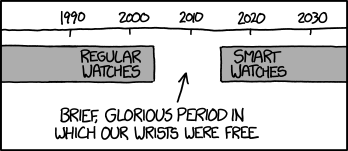Attorney General Eric Holder announced Friday that the Department of Justice would be putting a stop to local and state police participation in a federal asset seizure program called “Equitable Sharing.”
The program has allowed local and state police to seize assets—usually cash and vehicles—without evidence of a crime. If the former owner of the seized property fails to make a case for the return of his or her property, the local and state police were allowed to keep up to 80 percent of the assets, with the remaining portion returning to federal agencies.
"This is a significant advancement to reform a practice that is a clear violation of due process that is often used to disproportionately target communities of color," Laura Murph, the American Civil Liberties Union's Washington legislative office director told Ars in a statement.
The Electronic Frontier Foundation also did its own research into how much of the federal asset forfeiture funds were going back into surveillance and wiretapping, finding that California spent $13.6 million on spying.
“Holder’s announcement could have a significant impact on how law enforcement agencies fund electronic surveillance,” Dave Maas, an EFF spokesman, told Ars. “However, it’s important to remember that the next administration’s attorney general could easily reverse this policy decision. Further, many states also have their own asset forfeiture programs, so a whole second layer of funding remains on the state level.”
Billions and billions
The Washington Post reports that since 2008, local and state police departments have seized approximately $3 billion in assets from 55,000 seizures around the country. In an earlier article published by the paper, government documents detailed that police departments spent their share of that money on “Humvees, automatic weapons, gas grenades, night-vision scopes and sniper gear,” and “electronic surveillance equipment” as well as less high-tech items like coffee makers, “challenge coin” medallions, and clown appearances (“to improve community relations”).
Data collected by the Post revealed that as a whole, local and state law enforcement agencies spent at least $121 million of the funds springing from these asset forfeitures on electronic surveillance equipment. Such equipment purchases are usually made with little oversight, and can include stingrays, license-plate readers, or wiretap equipment.
The seizure program began three decades ago as part of the federal government's War on Drugs and was meant to confiscate airplanes and boats that drug smugglers used to transport narcotics. In the 1980s, the program expanded to permit the seizure of cash and, especially after 2001, upticks in seizures were seen and justified as part of the efforts to fight terrorists.
Holder's decision today still allows certain assets to be seized under the federal law without officially charging the owner for a crime, “including firearms, ammunition, explosives and property associated with child pornography,” the government's press release stated.
Federal authorities will still be able to seize assets as before, and local and state police departments often have their own seizure rules that won't be changed by this new policy. However, the Post notes that most states require seized assets to go into the general fund rather than directly to the police department, as the Equitable Sharing funds did.
The new policy also does not apply “to seizures resulting from joint operations involving both federal and state authorities, or to seizures pursuant to warrants issued by federal courts.” Such seizures have been used in high-profile cases that Ars has followed closely, such as the US government's case against Kim Dotcom (the federal complaint seeking the civil forfeiture of Dotcom's assets is here) or in the case of the US government versus Ross Ulbricht, alleged to be the kingpin of the Silk Road (you can follow Ars' coverage of Ulbricht's trial, which is ongoing).






